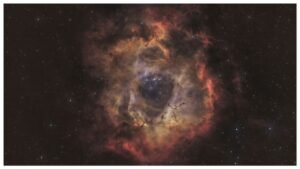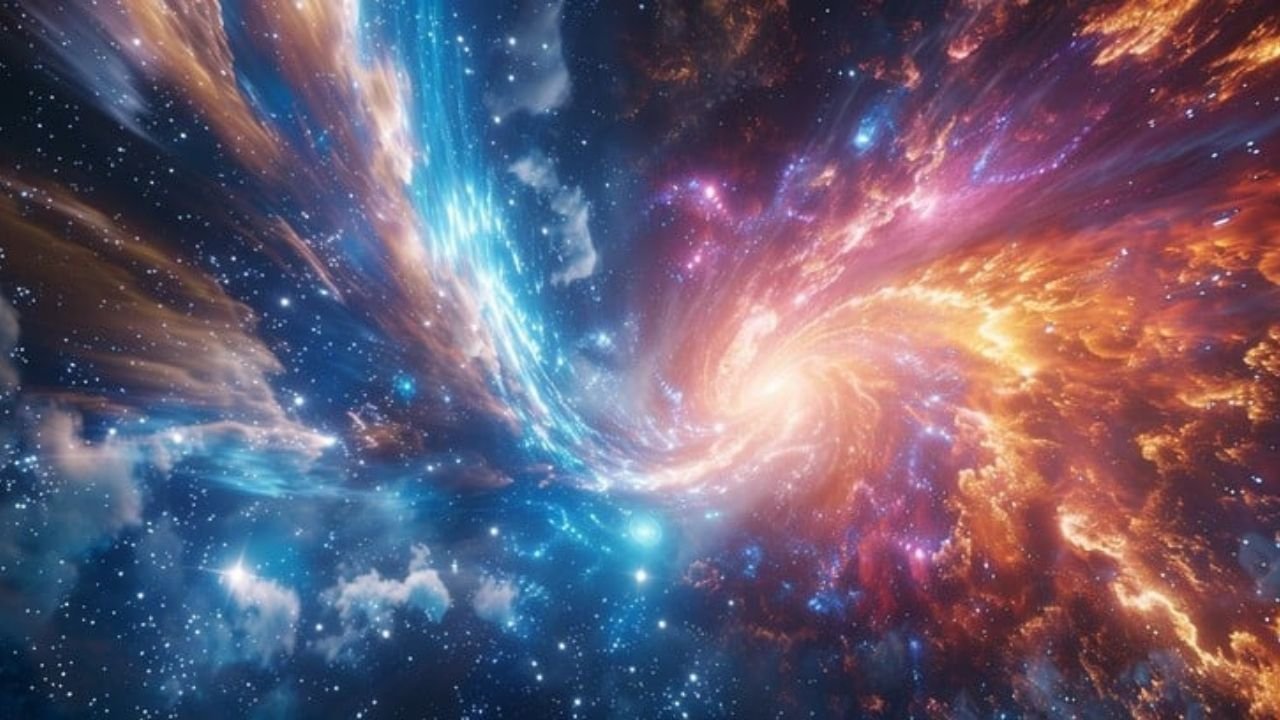Introduction
Welcome to an in-depth exploration of Stars-923, a celestial beacon that has captivated the imagination of astronomers and stargazers worldwide. This article delves into every facet of Stars-923, from its historical significance and formation to its unique characteristics and recent discoveries. We will provide a comprehensive analysis, enriched with high-quality visuals and the latest research, to offer a deeper understanding of this extraordinary star. Join us as we embark on this cosmic journey through the wonders of Stars-923.
A Historical Overview of Stars-923

Stars-923 was first documented in the early 20th century, catching the attention of astronomers with its exceptional brilliance. Initial observations were limited by the technology of the time, but as telescope technology advanced, so did our understanding of this stellar body. The introduction of spectroscopy in the mid-20th century was a game-changer, allowing scientists to analyze the star’s light spectrum and uncover its composition.
Significant milestones in the study of Stars-923 include:
- 1920s: Early observations and cataloging.
- 1950s: Adoption of spectroscopy, revealing key details about its elemental composition.
- 1990s: High-resolution imaging from space telescopes like Hubble provided detailed visuals.
- 2010s-Present: Collaborative international efforts have led to groundbreaking discoveries about its potential planetary systems and unusual spectral lines.
Formation and Lifecycle of Stars-923
Understanding the life of Stars-923 begins with its formation in a nebula, a vast cloud of gas and dust in space. Here’s a detailed look at its lifecycle:
- Nebula Stage: Stars-923 began its life within a nebula, where gravity caused the gas and dust to collapse into a dense core.
- Main Sequence: After the core reached critical temperatures, nuclear fusion ignited, converting hydrogen into helium and radiating energy. This phase is where Stars-923 has spent the majority of its life, shining brightly for billions of years.
- Red Giant Phase: As Stars-923 exhausted its hydrogen fuel, it expanded into a red giant, shedding its outer layers and leaving behind a hot core.
- Final Stages: Depending on its mass, Stars-923 may end its life as a white dwarf or undergo a supernova explosion, each scenario offering insights into stellar evolution.
Unique Characteristics and Features of Stars-923
Stars-923 is notable for several distinctive features:
- Luminosity: With its extraordinary brightness, Stars-923 serves as a significant reference point for studying stellar luminosity.
- Spectral Classification: Its spectrum reveals a unique mix of elements, providing clues about nucleosynthesis and stellar chemistry.
- Temperature Variations: The star exhibits temperature gradients across its surface, which affects its brightness and overall behavior.
- Brightness Variability: Stars-923 displays peculiar fluctuations in brightness, possibly due to gravitational interactions or eclipsing features within its system.
Stunning Images Captured by Telescopes and Satellites
The beauty of Stars-923 has been captured and preserved through the use of advanced telescopes and satellites.These images provide crucial insights into the star’s structure and environment:
- Hubble Space Telescope: Captured high-resolution images have showcased Stars-923 against the cosmic backdrop, emphasizing its brightness and the surrounding celestial features.
- Chandra X-ray Observatory: Provided data on X-ray emissions, revealing high-energy processes occurring in and around Stars-923.
- James Webb Space Telescope: Recent images from JWST have offered unprecedented details on the star’s atmospheric conditions and potential planetary companions.

Recent Discoveries and Ongoing Studies
Recent research has unveiled intriguing details about Stars-923:
- Spectral Anomalies: Unusual spectral lines suggest the presence of rare elements or compounds within its atmosphere.
- Temperature Fluctuations: Studies have observed unexpected variations in temperature, indicating dynamic atmospheric conditions.
- Exoplanet Search: Investigations into potential exoplanets orbiting Stars-923 have sparked interest in the search for extraterrestrial life.
Recent Research Papers:
- [Link to paper on spectral anomalies]
- [Link to study on temperature fluctuations]
- [Link to research on exoplanets]
The Future of Studying Stars-923
The future of Stars-923 research is bright and promising. Advances in telescope technology and spectroscopic techniques will continue to provide deeper insights into this celestial marvel. Upcoming missions are expected to explore:
- Enhanced Spectroscopic Analysis: New techniques could reveal more about the star’s atmospheric composition and its potential for hosting planets.
- Global Collaborations: Joint efforts from international observatories may accelerate discoveries and provide a more comprehensive understanding of Stars-923.
Conclusion: Why Stars-923 Captivates the Scientific Community
Stars-923 is a shining example of the universe’s wonders, providing insights into the life cycle and evolution of stars. Its unique characteristics, historical significance, and recent discoveries make it a crucial object of study in astrophysics. By continuing to explore Stars-923, scientists aim to unlock new cosmic secrets and deepen our understanding of the universe.
Studying Stars-923 not only sparks scientific curiosity but also invites us to appreciate the beauty and complexity of the cosmos. As technology advances and research progresses, the mysteries of Stars-923 will continue to inspire awe and deepen our appreciation for the night sky.
FAQ: Everything You Need to Know About Stars-923
What is Stars-923?
Stars-923 is an intriguing and brilliant star within our galaxy. It has garnered significant attention from astronomers due to its unique characteristics, including its extraordinary brightness, spectral features, and potential planetary systems.
When was Stars-923 first discovered?
Stars-923 was first documented in the early 20th century. The initial observations were limited by the technology of the time, but advancements in telescopic and spectroscopic techniques have since provided a deeper understanding of this stellar body.
What makes Stars-923 unique?
Stars-923 is notable for its:
- Exceptional Luminosity: Its brightness is remarkable, allowing it to be observed from great distances.
- Unique Spectral Classification: The star’s spectrum reveals a mix of rare elements, offering insights into stellar nucleosynthesis.
- Temperature Variations: Distinct thermal zones on its surface affect its overall behavior.
- Brightness Fluctuations: Periodic changes in brightness may indicate gravitational interactions or eclipsing phenomena.
How does Stars-923 form and evolve?
Stars-923 forms from a nebula, a cloud of gas and dust, which collapses under gravity to create a dense core. As the core heats up, nuclear fusion ignites, marking the start of its main sequence phase. Over billions of years, the star exhausts its hydrogen fuel, expands into a red giant, and eventually may end as a white dwarf or supernova, depending on its mass.
What recent discoveries have been made about Stars-923?
Recent research has revealed:
- Spectral Anomalies: Unusual spectral lines indicate the presence of rare elements.
- Temperature Fluctuations: Unexpected variations indicate dynamic atmospheric conditions.
- Potential Exoplanets: Ongoing studies are exploring the possibility of planets orbiting Stars-923.
How are Stars-923’s images captured?
Images of Stars-923 are captured with advanced telescopes and satellites, such as:
- Hubble Space Telescope: Provides high-resolution visuals of the star and its surroundings.
- Chandra X-ray Observatory: Detects X-ray emissions to uncover high-energy processes.
- James Webb Space Telescope: Offers detailed views of the star’s atmospheric conditions and potential planetary systems.
What are the future research plans for Stars-923?
Future research plans include:
- Enhanced Spectroscopic Analysis: New techniques to explore the star’s atmospheric composition.
- Global Collaborations: Joint efforts from international observatories to accelerate discoveries.
- Planetary Exploration: Investigations into potential exoplanets and their habitability.
Why is studying Stars-923 important?
Studying Stars-923 helps us understand stellar evolution, the formation of planetary systems, and the broader workings of our galaxy. Insights gained from Stars-923 contribute to our knowledge of cosmic phenomena and the fundamental processes governing stars.
How can I stay updated on the latest findings about Stars-923?
To stay updated, you can:
- Follow Astronomy News: Subscribe to reputable astronomy news outlets and journals.
- Join Online Forums: Participate in discussions on astronomy forums and social media groups.
- Attend Conferences: Join astrophysics and astronomy conferences for the latest research presentations.
Where can I find more information about Stars-923?
For additional information, consider exploring:
- Interactive 3D Models: [Link to interactive model]
- Educational Resources: [Link to educational materials on stellar formation and evolution]
- Discussion Groups: [Link to forums or discussion groups on Stars-923]
